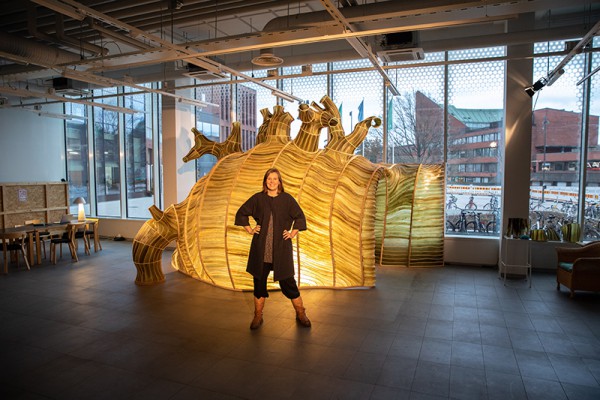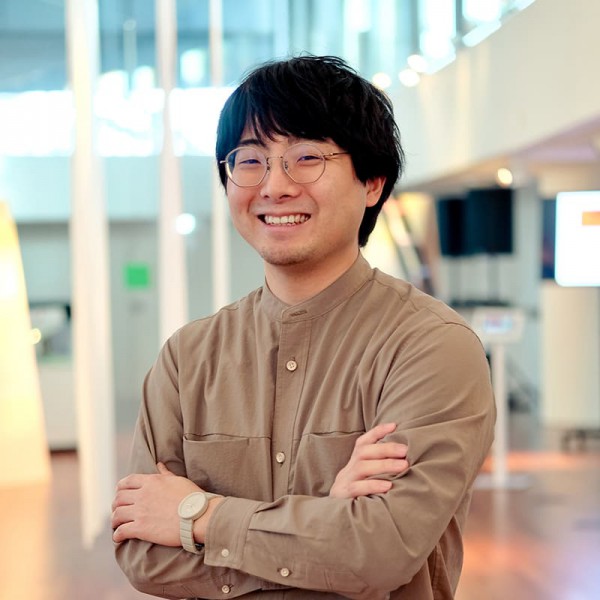Theme
Flickering Shores, Sea Imaginaries
This year’s edition of the Sea Art Festival, Flickering Shores, Sea Imaginaries, is an invitation to reimagine our relationship with the sea, marine species and environments through art and culture.
We are the sea, one body of water. As all life on Earth, we emerged from the vast body of water that covers the biggest part of our planet, our body itself is composed of saline water. But despite our deep connection with the sea, we often perceive it as something foreign, detached and distant from it. Instead of understanding the sea and ocean as that which connect us, we view it as a vast body of water that separates us. The sea is a vital source for our survival, but in our contemporary capitalist society, it is also a vast industry we exploit and depend on in many ways.
The sea has been providing us with valuable resources; a source of food, jobs, energy, minerals, medicines, goods and services, but also a host for our vast internet data travelling through undersea cables, a site for trading routes, travel, cross-cultural exchange and migration, the sea has always been central to many industries and world economies. Most of the products we consume - 90% of our goods is transported around the world with ocean shipping - and therefore money, flows into the mainlands from ports. Some of these reasons have made it attractive for people throughout history to migrate towards coastal areas and coastal cities have been occupying strategic positions in terms of trade, transport, economy, tourism, food, but also as tax havens and military outposts.
At the same time, the sea absorbs greenhouse gases generating oxygen, and stores big amounts of CO2 playing a significant role in climate change mitigation. And although sea water covers more than two thirds of the planet’s surface, human activity and interference - from shipping, cruise tourism, wind farming, mining, overfishing, but also nuclear testing, industrial waste dumping, and of course plastic pollution - has been causing the fast acidification and warming of waters threatening the health of our ocean and the survival of marine life, but also creating catastrophic consequences for our planet. From accelerating coastal land development and tourism to rising sea levels, pollution and loss of biodiversity, coastal communities can experience first hand some of the consequences of human activity.
At a time when deep sea mining can become a reality as early as 2026, taking sea exploitation and extractivism to new levels and creating still unknown risks for marine environments, we urgently need to rethink and evaluate our relationships with the body of water that surrounds us and is vital for our survival. It is mportant to understand the connection between the marine and terrestrial and how this relation has been intensified under capitalism “incorporating the oceans into the law of value, extending maritime commodity frontiers and attempting in the process to ‘flatten’ the geophysical division between solid ground and fluid water” - to quote Liam Campling and Alejandro Colás (authors, Capitalism and the Sea). As it's also important to understand the connections between consumer society, humans and nature and how our society focuses on profit and eternal growth rather than questioning how our activity might be impacting the planet.
Exploring the sea through creative connections with marine ecologies, as many of the artists in this year’s Sea Art Festival prompt us to do, is an attempt to help us imagine a future moving away from exploiting sea resources unsustainably to one of co-creating a connected sea vision and imagining alternative economies of the sea.
Ilgwang presents a unique setting for the artistic interventions, collaborations and conversations that will be taking place during Flickering Shores, Sea Imaginaries. Here we are at the heart of a coastal, fishing, diving and seaweed farming community with a long tradition, connection and interdependence with the sea. At the same time, this is a community witnessing fast land and coastal development, and facing increasing challenges as they experience and are impacted first hand by climate change, more frequent and intense weather events, coastal erosion, and sea levels rise. These changes and challenges are being felt by other coastal areas across the world.
Art has engaged with the sea for a long time; as a source of creativity, inspiration and desire, but also expressing darkness, despair, as well as socio-political and environmental anxieties. Bringing together artists, scholars, marine researchers, coastal communities and visitors, this year’s Sea Art Festival invites us to focus on different stories about the sea, symbiosis, cooperation and resistance rather than profit and consumerism. It draws links on the realities of coastal communities across the world in the face of climate change, and encourages us to pause and acknowledge the value of the sea, activating dialogue and creative exchange.
Art has the power to help us see things differently, it can change our perception and open up new perspectives and possibilities. Flickering Shores, Sea Imaginaries aims to explore new relationships with the sea and its ecologies, but also the role of coastal cities and communities and their potential as a global interconnected network leading to the quest for restoring our seas. It is an invitation to think of the sea as a space for creativity and cooperation, and an exploration of how artistic approaches, methodologies and interventions can enable collective visions and foster synergies working with rather than against marine ecologies.







